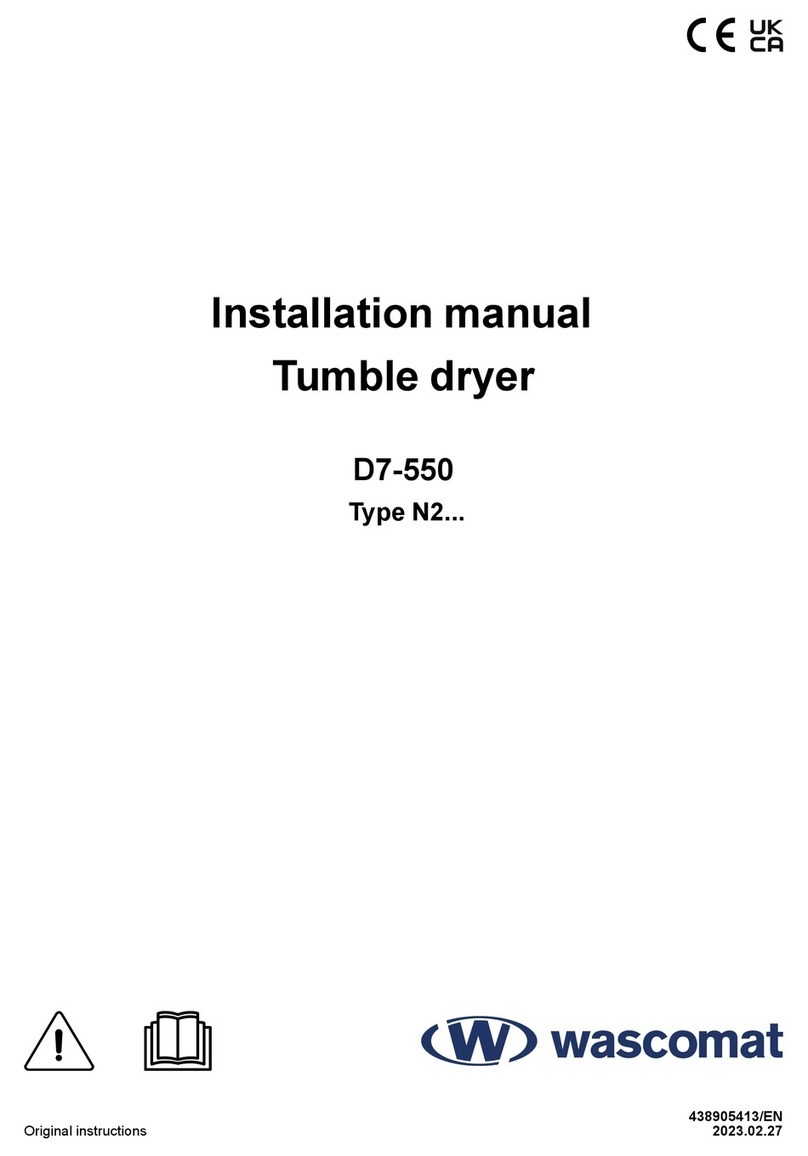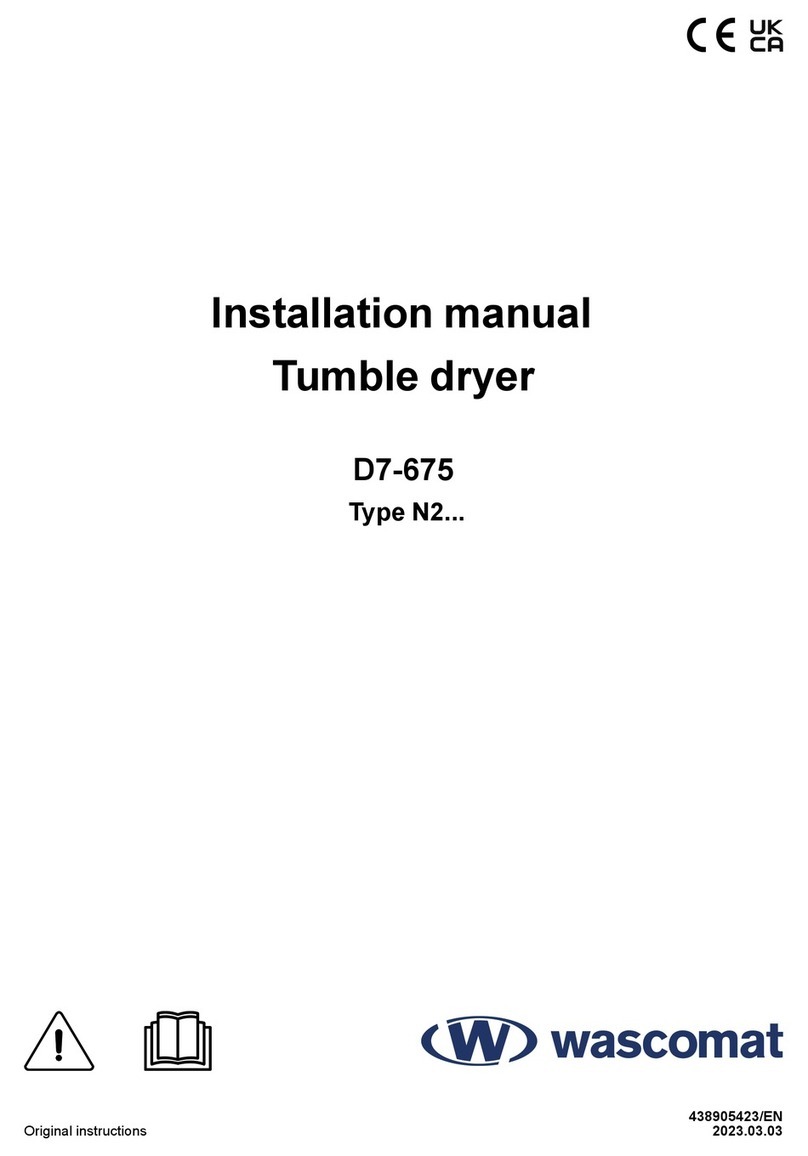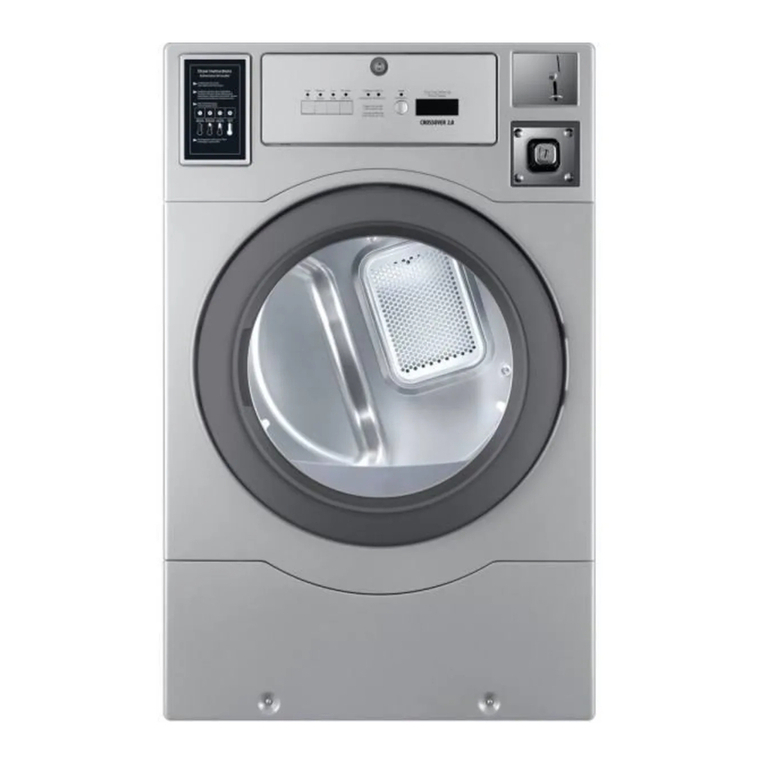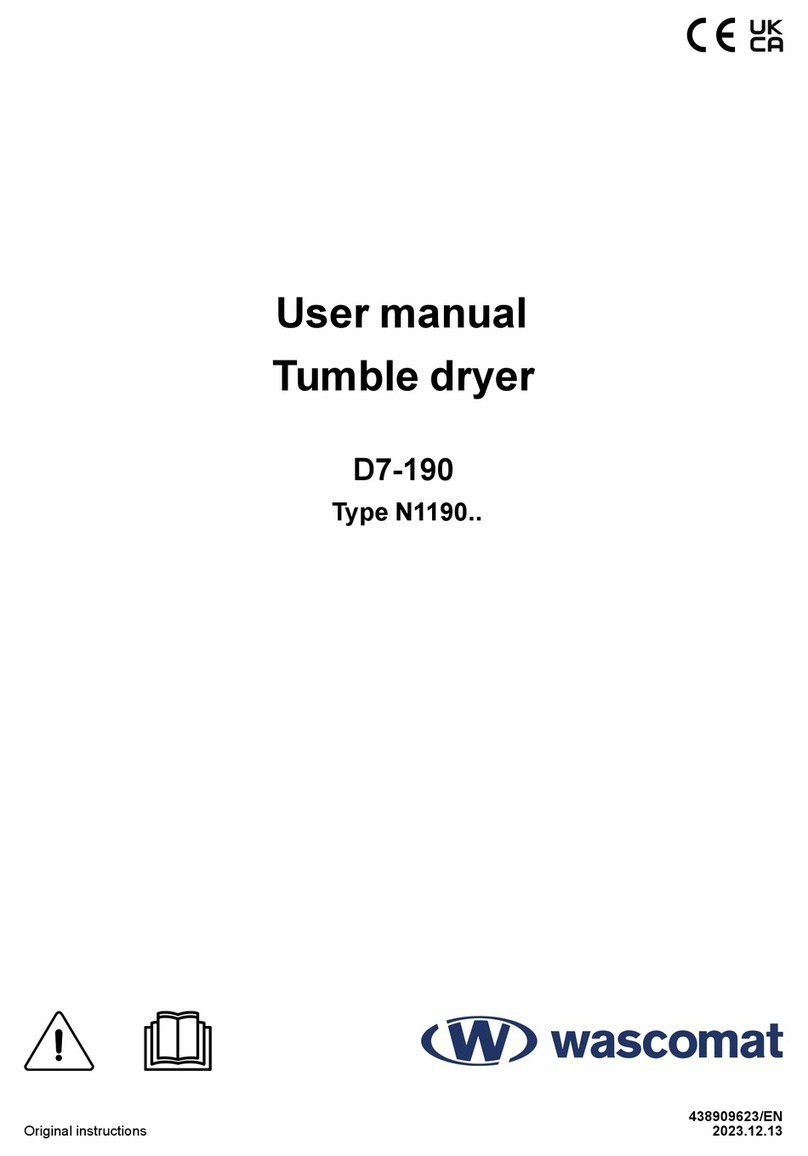
Contents
Contents
1 Safety Precautions ..............................................................................................................................5
1.1 Gas heated tumble dryer: ...........................................................................................................7
1.2 General safety information..........................................................................................................7
1.3 Commercial use only..................................................................................................................7
1.4 Symbols....................................................................................................................................8
2 Technical data.....................................................................................................................................9
2.1 Drawing ....................................................................................................................................9
2.2 Technical data .........................................................................................................................10
2.3 Connections ............................................................................................................................10
3 Setup ............................................................................................................................................... 11
3.1 Unpacking............................................................................................................................... 11
3.2 Recycling instruction for packaging ...........................................................................................12
3.3 Siting ......................................................................................................................................13
3.4 Mechanical installation .............................................................................................................14
4 Reversing the door ............................................................................................................................15
5 Evacuation system ............................................................................................................................17
5.1 Air principle .............................................................................................................................17
5.2 Fresh air..................................................................................................................................17
5.3 Exhaust duct ...........................................................................................................................18
5.4 Shared exhaust duct ................................................................................................................18
5.5 Exhaust dimensioning ..............................................................................................................19
5.6 Outside Ductwork Protection.....................................................................................................20
6 Electrical connection..........................................................................................................................21
6.1 Electrical installation ................................................................................................................21
6.2 Single-phase connection ..........................................................................................................22
6.3 Electrical connections ..............................................................................................................22
6.4 Install the Electronic Coin Meter (Coin Operated Models)............................................................23
7 Gas connection .................................................................................................................................25
7.1 Fasten the label .......................................................................................................................25
7.2 General...................................................................................................................................25
7.3 Connect the dryer to the gas supply...........................................................................................26
7.4 Gas installation........................................................................................................................26
7.5 Table of pressure .....................................................................................................................27
7.6 Test run...................................................................................................................................27
7.7 Converting instructions.............................................................................................................27
7.8 Data label................................................................................................................................32
8 Coin meter operation .........................................................................................................................33
8.1 Price Programming & Drying Time Program Setup .....................................................................33
8.2 Free Dry / OPL Mode ...............................................................................................................34
8.3 Price and Time Registers..........................................................................................................34
8.3.1 Time for Amount to Start .................................................................................................34
8.3.2 Time Per Coin (or Push In Free Dry Mode) .......................................................................34
8.4 Promotion programming (for extra drying time)...........................................................................34
8.5 Promotion via the real time clock (RTC) .....................................................................................35
8.6 Promotion via external clock-driven relay or switch .....................................................................35
9 Function check..................................................................................................................................36
10 CPU reset.........................................................................................................................................36
11 Disposal information..........................................................................................................................37
11.1 Disposal of appliance at end of life ............................................................................................37
11.2 Disposal of packing..................................................................................................................37
The manufacturer reserves the right to make changes to design and component specifications.




































